24/05: Starting to Wind Down
Category: General
Posted by: The Agnew Family
Guiness and a glass of Chardoney were tonight's libations.
This morning we drove a few miles to Bru na Boinne. Bru na Boinne, which means the ‘palace’ or the ‘mansion’ of the Boyne, refers to the area within the bend of the River Boyne which contains one of the world’s most important prehistoric landscapes.Within Bru na Boinne are three well-known large passage tombs, Knowth, Newgrange and Dowth, built some 5,000 years ago in the Neolithic or Late Stone Age.
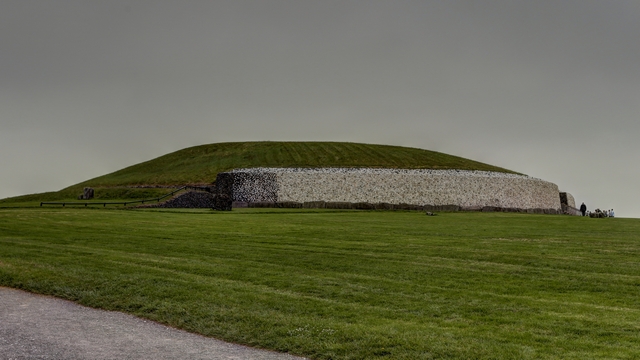
In the 1960's when archeaologists started excavating the site, Newgrange was a small hill. As they dug they found stones not native to the area, then large stones and finally the opening into the tomb. It has since been "rebuilt" to match one archaeologist's view of what Newgrange would have looked liked.
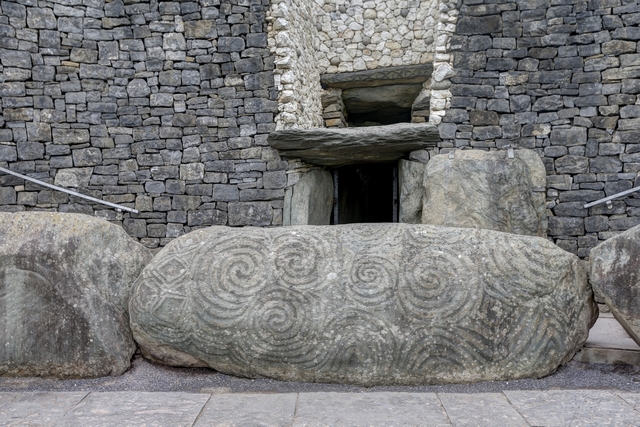
The entrance to the tomb. The outside of the tomb is ringed with carved kerb stones. Above the doorway is a port that allows the sun to enter the tomb and shine to the back of the tomb on December 21st --- winter soltice. When you enter the tomb you walk down a very narrow low passage way and after 19 metres you enter a large chamber with three recesses. Unfortunately photography was not allowed in the passage way or chamber.
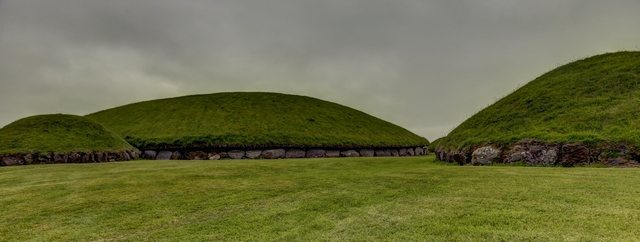
Knowth is a large mound with 2 tombs. There are also a number of smaller mounds in the same grounds.
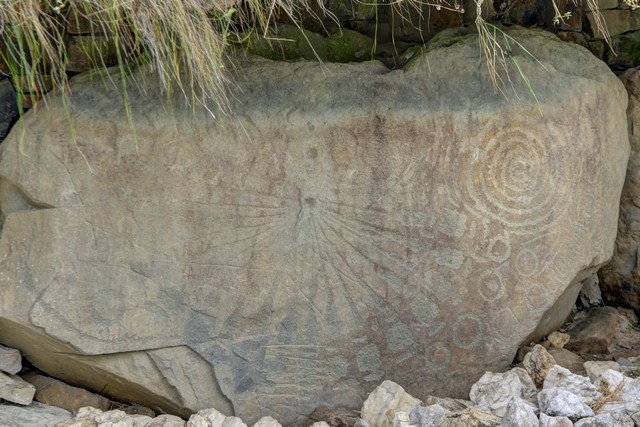
Knowth also has carved kerb stones.
The mounds look boring but the history behind them is very interesting.
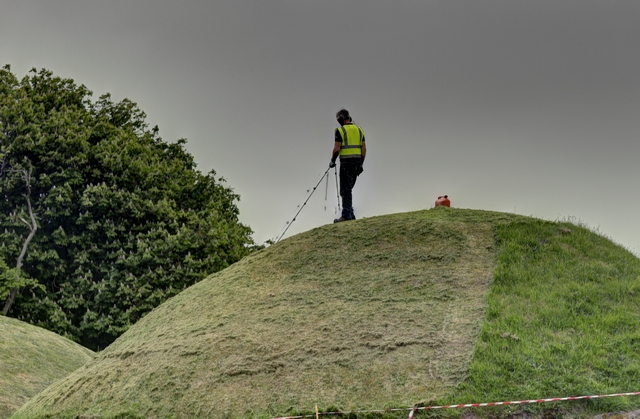
The mounds need maintenance, so you have to figure out how to mow them.
Next stop our hotel a few kilometres away from the Dublin airport. We checked in, dropped our bags off and drove to the car rental car return. The sun was shining and it was about 21 degrees C so we walked the 4 1/2 km back to the hotel. Now it's time for a restful evening before we head into Dublin tomorrow.
This morning we drove a few miles to Bru na Boinne. Bru na Boinne, which means the ‘palace’ or the ‘mansion’ of the Boyne, refers to the area within the bend of the River Boyne which contains one of the world’s most important prehistoric landscapes.Within Bru na Boinne are three well-known large passage tombs, Knowth, Newgrange and Dowth, built some 5,000 years ago in the Neolithic or Late Stone Age.

In the 1960's when archeaologists started excavating the site, Newgrange was a small hill. As they dug they found stones not native to the area, then large stones and finally the opening into the tomb. It has since been "rebuilt" to match one archaeologist's view of what Newgrange would have looked liked.

The entrance to the tomb. The outside of the tomb is ringed with carved kerb stones. Above the doorway is a port that allows the sun to enter the tomb and shine to the back of the tomb on December 21st --- winter soltice. When you enter the tomb you walk down a very narrow low passage way and after 19 metres you enter a large chamber with three recesses. Unfortunately photography was not allowed in the passage way or chamber.

Knowth is a large mound with 2 tombs. There are also a number of smaller mounds in the same grounds.

Knowth also has carved kerb stones.
The mounds look boring but the history behind them is very interesting.

The mounds need maintenance, so you have to figure out how to mow them.
Next stop our hotel a few kilometres away from the Dublin airport. We checked in, dropped our bags off and drove to the car rental car return. The sun was shining and it was about 21 degrees C so we walked the 4 1/2 km back to the hotel. Now it's time for a restful evening before we head into Dublin tomorrow.